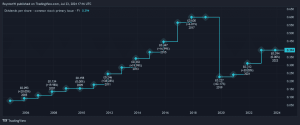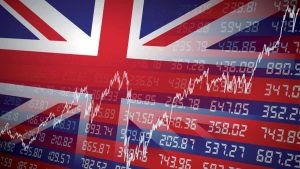Gold futures moved lower on Thursday, pressured on the back of strength in the U.S. stock market and a drop in weekly U.S. initial jobless claims to their lowest since the pandemic began.
The modest losses for the precious metal came as U.S. benchmark stock indexes drew support following reports that President Joe Biden will announce additional federal vaccine mandates.
Still, the dollar saw relatively steady trading and Treasury yields weakened after the European Central Bank President Christine Lagarde said Thursday that a decision to slow the pace of asset buying under the ECB’s pandemic emergency program didn’t amount to “tapering.” She said the central bank was merely recalibrating the its stimulus efforts.
In a statement, the ECB said “the Governing Council judges that favorable financing conditions can be maintained with a moderately lower pace of net asset purchases under the PEPP than in the previous two quarters.”
The statement was “somewhat hawkish, as many traders were surprised over the lower PEPP buying,” said Edward Moya, senior market analyst at Oanda, in a market update. “Good news for the euro is also very positive for gold prices.”
In Thursday dealings, however, December gold
GC00,
GCZ21,
traded $6, or 0.3%, lower at $1,787.80 an ounce, following a 0.3% decline on Wednesday. The yellow metal scored a slight haven bid on Wednesday after the release of the Federal Reserve’s Beige Book indicated that economic growth was slowing amid the spread of the delta variant of COVID-19.
“If dollar resilience becomes the theme for the rest of the week, gold could see sellers take price down to the $1,750 level,” warned Moya. On Thursday, the ICE U.S. Dollar Index
DXY,
was down nearly 0.1% at 92.603, though up by 0.6% in the week to date.
Data released from the Labor Department Thursday showed Initial jobless claims fell by 35,000 to 310,000 in the week ending Sept. 4. That’s the fewest claims since the pandemic struck in March 2020.
Employment data has become a key measure of investors bets on the pace of the U.S.’s recovery from the COVID pandemic, with the Fed set the stage for the eventual reduction of accommodative measures that were put in place to provide much-needed to liquidity to financial markets at the height of the distress caused by the deadly pathogen. However, those measures are viewed by a number of Fed officials as no longer needed.
Meanwhile, the World Gold Council reported that gold-backed exchanged-traded funds saw net outflows of $1.3 billion in August, “triggered by the dollar’s brief strengthening and rising Treasury yields at the beginning of the month.”
“Despite the recovery in the gold price during the second half of August, outflows were likely driven by changes in momentum and interest rates,” said Adam Perlaky, senior analyst at the WGC, in emailed commentary.
“The initial selloff, catalyzed by low liquidity conditions, may have unnerved some investors and resulted in lower investment demand,” he said. “However, gold remains a valuable asset for investors looking forward, as weak equity returns in emerging markets and persistently high inflation reports will serve as tailwinds.”
He also said September has been one of the “strongest months historically” for the price of gold, potentially offering an “opportunity for investors as we head into the fourth quarter of the year.”
In other metals trading Thursday, December copper
HGZ21,
tacked on 1.2% to $4.28 a pound. October platinum
PLV21,
fell 0.2% to $974.40 an ounce, while December palladium
PAZ21,
traded 0.4% lower to $2,228 an ounce.
This post was originally published on Market Watch






